Planning for State College’s 1st arts festival took mere months. How it came together
A new summer arts festival in State College was merely a suggestion in the winter of 1966 and a few months later was the first edition of the Central Pennsylvania of the Arts.
“Concern that State College should continue to put on appropriate new faces and try itself in new mediums” led a State College Area Chamber of Commerce committee to propose the festival, the CDT wrote in a special section previewing the inaugural festival, which was held July 22-30, 1967. The first event was sponsored by the chamber and Penn State College of Arts and Architecture.
Days before the start of the 57th annual event, here’s a look at the festival’s beginnings:
Building community support
Initial planning for a nine-day festival began in May 1967, with leaders of the university departments of art, music and theater collaborating with administrators in the College of Arts and Architecture.
Organizers were optimistic as work got underway.
“The enthusiasm of people who already have spoken with us about the festival indicates that it will be a high spot of the summer in central Pennsylvania,” Wallis Lloyd, chamber president and festival co-chairman, was quoted in the CDT in mid-May. “Eventually we expect it will attract visitors from the entire eastern part of the United States.”
Jules Heller, Arts and Architecture dean and festival chairman, said he expected the festival to become an annual event.
But “only a handful of residents” showed up for the first open planning meeting for the festival in early June, the CDT reported. Heller noted that a recent arts festival in Philadelphia wrapped after a year of planning, while State College’s festival was being put together in a manner of months.
Participants and competitors were sought from an eight-county area. Organizers personally contacted regional artists and art groups and sent volunteers to surrounding counties with brochures and posters to spread the word.
Advertisements also ran in the CDT looking to draw community backing for the festival.
The festival attracted the attention of Gov. Raymond Shafer, who suggested Arts Fest could lead to a statewide festival, a “cultural olympics.” While visiting the area to see his son (a grad student in theater arts) in a university production, he said the Pennsylvania Council on the Arts was planning for an event that would “get all our young people competing in all the arts,” the CDT reported May 15.
The arts council provided a $2,000 grant while downtown State College merchants contributed $1,200.
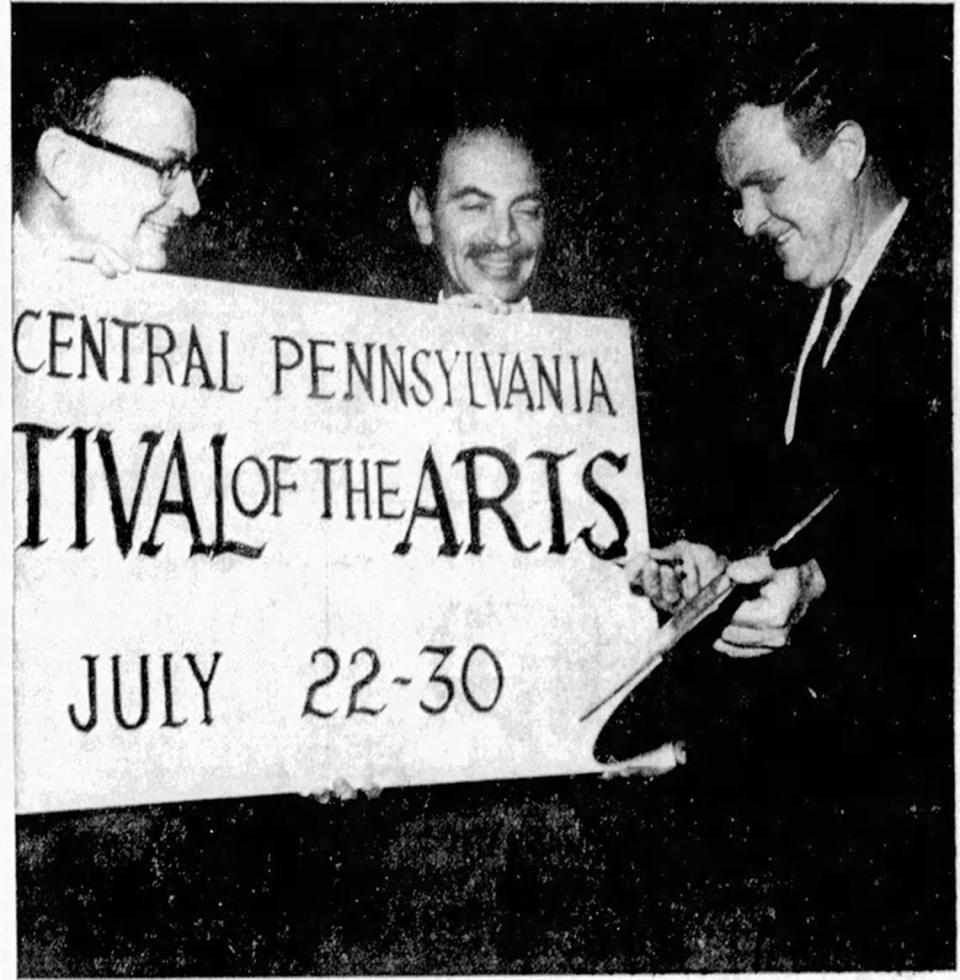
Residents were asked to create banners 7 feet long and 30 inches wide that would hang from light fixtures on College Avenue, Allen Street and on campus ”to add a cultural atmosphere to the week-long festivities,” the CDT reported. By late June, Decoration Committee Chairman Guy Kresge launched a contest to bring in another 200 banners. The three winners would receive gift certificates redeemable at downtown businesses.
Organizers also asked residents to donate flowering plants to help decorate the South Allen Street intersections that were closed to traffic for the festival.
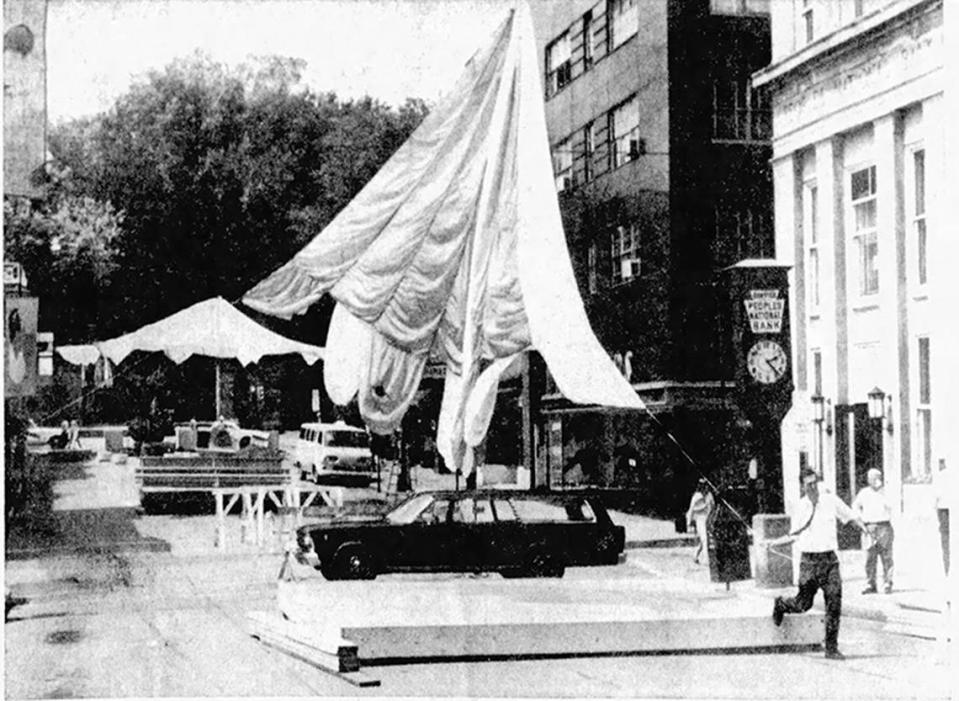
Anticipation was building in early July, with a CDT editorial noting the last week of the month “promises to be one of the most exciting in Centre County history” thanks to the festival.
“It’ll be exciting for many reasons, most important of which may be the simple fact that the program will feature something to satisfy most everyone’s preferences,” the editorial stated.
In a story the day before the festival opened, the CDT noted the contributions from many community members in getting the festival on its feet: “Scores of residents pitched in their imaginations and creative abilities to formulate the program encompassing fine arts, music, drama and film art.”
Festival week arrives
The governor returned to town to open the festival on July 22. Shafer’s helicopter touched down on Old Main lawn, and he — accompanied by State College Mayor Chauncey Lang, university President Eric Walker and Heller — made his way to the South Allen Street stage to cut the strings on a banner that read “Central Pennsylvania Festival of the Arts.”
“Anything that can stimulate the arts is a benefit to all of us,” Shafer said.
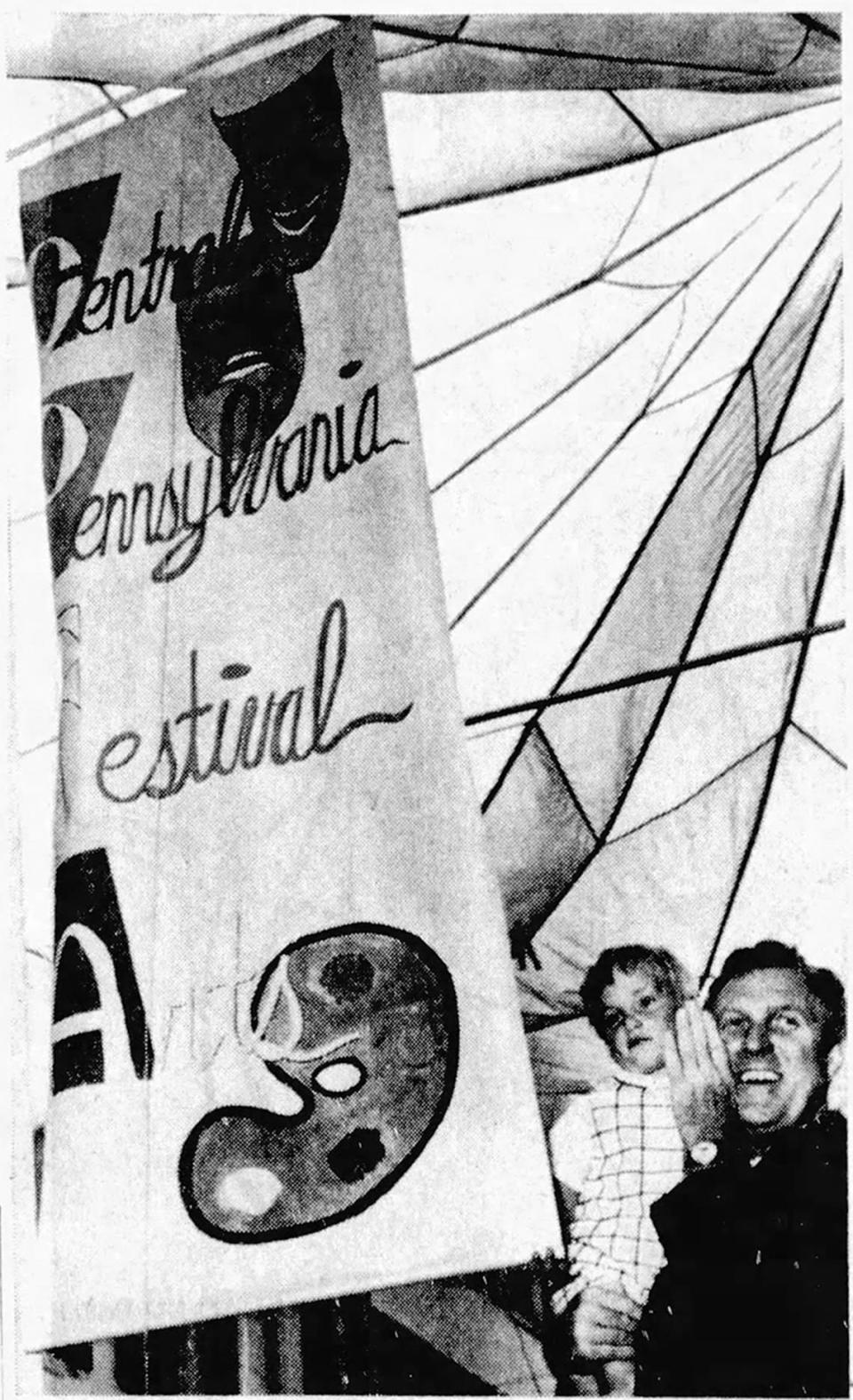
Students and professionals demonstrated their art in process each afternoon from stages on Allen Street, and about 300 works were submitted for a juried exhibition.
A sidewalk show on the festival’s first day — a Saturday — was deemed so successful that artists were given the OK to set up along College Avenue during the week. A second formal sidewalk show was scheduled for the next Saturday.
Experimental films were screened on South Allen Street and proved so popular that an additional night was added. There were jazz and band and choral concerts, along with plays by Penn State grad students in theater. The Little German Band of State College performance was a real crowd pleaser, according to a CDT headline.
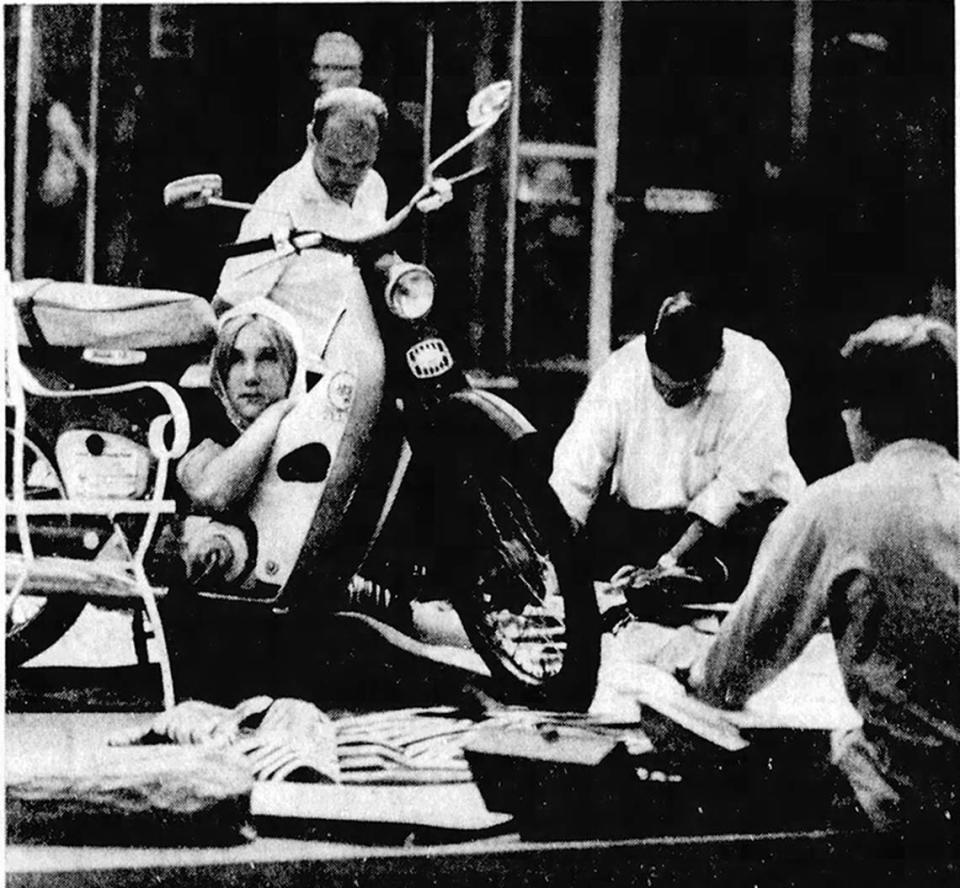
The festival even extended to television sets, with WPSX-TV airing a Festival of the Television Arts featuring programs on art or programs that use TV as an art form.
The weather wasn’t very cooperative, as rain fell almost every day of the festival and forced some events indoors. For the month, almost three times as much rain fell in the county as had been recorded during the previous July.
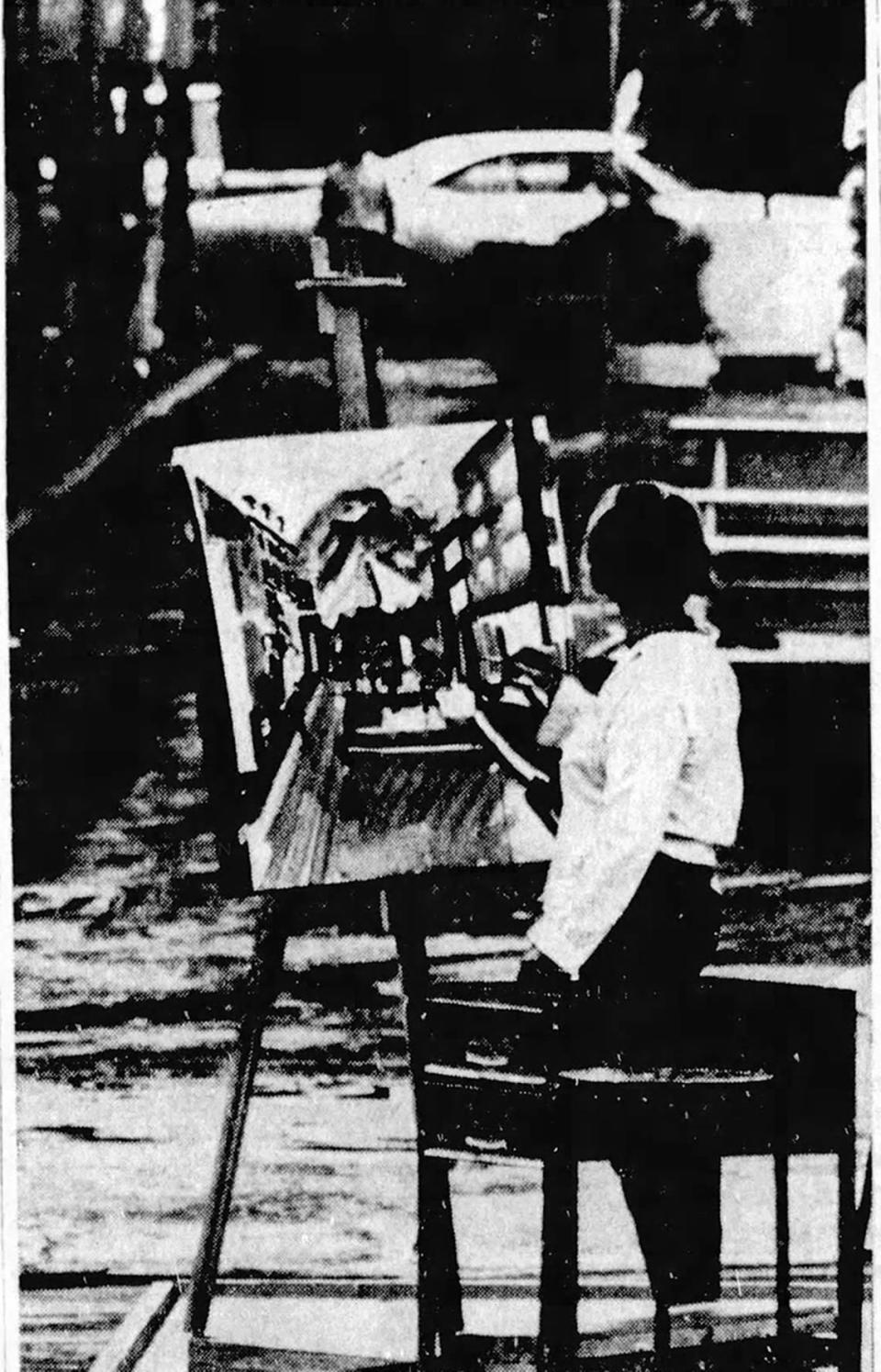
The reaction
The CDT’s Good Evening! column the day after the festival ended said “from almost every standpoint, it was a smashing success.”
“In a venture which demanded mass cooperation, only the mythical weatherman failed to come through. But even his record offerings of rain couldn’t eliminate enthusiasm for the program.”
Future festivals, the CDT urged, should be even greater, considering all the untapped potential in Centre County and central Pennsylvania.
Organizers said 15,000 people attended the nine-day event.
In a letter to the editor on Aug. 2, Heller offered his “deepest gratitude and heartfelt congratulations” to those who contributed to making the festival a success. The next festival should improve on the first, he wrote. “And succeeding ones should prove incisively that the creative and performing arts hold a meaningful place in the lives of the citizens in this region.”
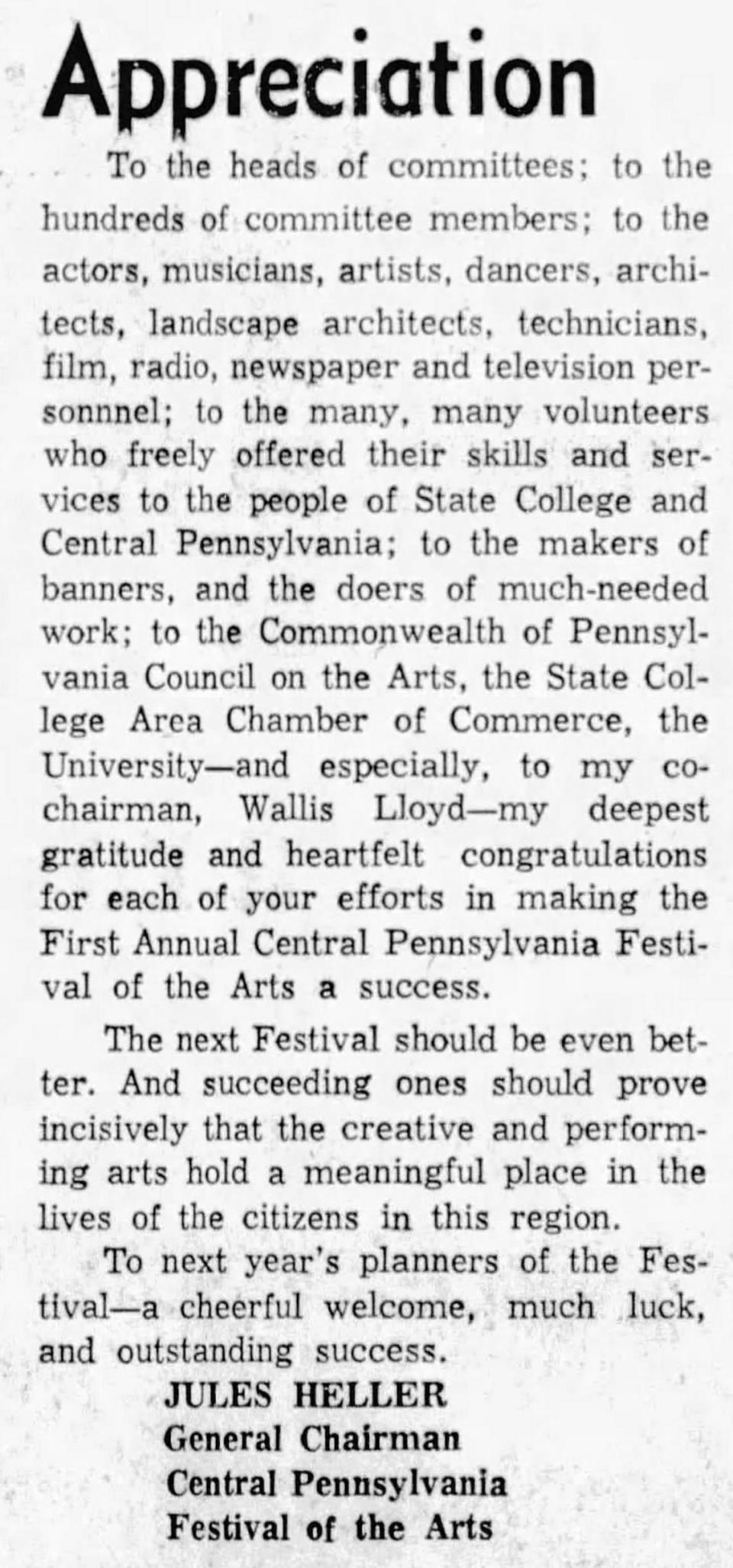
At the end of November, the second Central Pennsylvania Festival of the Arts was announced. The CDT’s story laid out high expectations for the July 1968 festival, noting the event was “promising even now an endless panorama of art, music, dance and theatre.” Perhaps guided by Heller’s advice, organizers were planning new and bigger programs “that will once again turn State College into a thriving mecca of the arts, a miniature New York and Paris rolled into one.”

